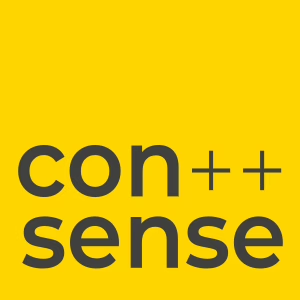Revit is one of the most powerful tools in design and construction, but that power comes with a hidden cost. Small inefficiencies such as repetitive cleanup, constant switching, and preventable mistakes add up to hours lost on every project. This leads to slower delivery and added pressure on teams.
Many try to patch these gaps with Excel, heavy plugins, or pyRevit scripts. While they can help in certain cases, they often create just as many problems as they solve: cluttered data, inconsistent results, and workflows that only the “power users” can manage. Instead of making Revit easier, they add complexity.
Let’s highlight five hidden workflow traps in Revit, explain why common workarounds fail, and show how lightweight tools can streamline processes and give teams back valuable time.
Are You Losing Hours in Your Revit Workflow? 5 Signs to Watch
1. Unstructured Data Is Slowing Down Your Revit Workflows
If your Revit workflow still depends on exporting schedules to Excel for sorting or classification, you’re likely wasting hours managing data that should stay native. Every manual export introduces risks, such as formatting breaks, version mismatches, or loss of data integrity.
Revit itself only sees individual parameter values. It doesn’t understand hierarchies like “Interior Wall → Wall.” This makes it hard to maintain structured metadata across projects. Many teams try to patch this in Excel or with heavy report plugins. Unfortunately, those only handle presentation, not structure.
BetterClassifier++ solves this by allowing you to build and manage hierarchical classifications through external configuration files that seamlessly integrate with Revit. The plugin displays these structured relationships directly inside the model, keeping everything consistent and easy to navigate.
Instead of patching schedules outside Revit, you’re creating a clean, well-organized data foundation that stays intact from design to handover.
2. Your Deliverables Look Clean on the Surface but Messy Underneath
Revit sheets might look polished, but the model often hides inconsistent naming, broken exports, and scattered standards – weak spots in your Revit workflow.
This chaos doesn’t always show up immediately; it shows up at handover, when clients need reliable data. Suddenly, small inconsistencies snowball into trust issues, costly rework, and doubts about professionalism.
Some patch this with pyRevit scripts, but these require coding skills and often deliver inconsistent results. Project Browser++ enforces standards, organizes naming conventions, and keeps navigation clean. By ensuring consistency at the model level, it protects your workflow from those hidden issues that undermine trust. Exports become reliable, and your deliverables carry the professionalism your clients expect.
With standards enforced and navigation simplified, your deliverables aren’t just clean on the surface, they’re solid all the way through.
3. Wasting Time Switching Worksets Hurts Your Revit Workflow
If you’ve ever placed an element in the wrong workset because you forgot to switch before drawing, you know how painful this can be. These small mistakes multiply into misplaced elements, model errors, and hours of unnecessary rework that slow down your Revit workflow.
The impact goes beyond your own productivity, slowing QA and confusing teams. Revit offers no native safeguard, and competitors don’t address it, leaving users to rely on memory and discipline.
This is where BetterWorkset++ changes everything. Instead of relying on memory and constant manual clicks, it automates workset assignments, ensuring that elements always land where they belong. The entire team benefits from consistent, error-free placement, without the friction of switching worksets dozens of times a day.
With automation handling the admin side, you stay focused on design, deliver cleaner models, and collaborate more smoothly without preventable mistakes – all while maintaining a consistent Revit workflow.
4. Your Workspace Is Overloaded with Windows and Tabs
Open Revit long enough, and your screen can start to feel like a maze. The impact goes deeper than just annoyance. Every extra click breaks focus and slows momentum in your workflow. On top of that, the more windows you leave open, the harder Revit has to work, slowing down performance. Yet no one in the Revit tools market has addressed this blind spot, so teams just accept the clutter.
Window Browser++ provides a centralized list of open windows for instant switching or bulk closing. With a single glance, you can clean up, regain focus, and work faster. No more endless clicking, no more clutter clogging up your screen.
With a cleaner workspace, you maintain a clearer mind, move through projects faster, and keep your Revit workflow efficient.
5. Scrolling Through Views to Find the Right One Breaks Your Revit Workflow
As projects grow, so does the number of views and sheets inside Revit. Scrolling through hundreds is frustrating and a drain on productivity, breaking the flow of your Revit workflow.
Teams often rely on manual discipline – naming rules, folders, or “just remember” habits – but none of these scale reliably, and they all depend on human vigilance, which inevitably slips under pressure.
Project Browser++ eliminates the hunt with advanced filtering, structured navigation, and fast search. In seconds, you can find exactly what you need and keep moving. No more wasted minutes – just quick, reliable access that supports focus and consistency, even in the largest projects.
With less time wasted searching, your Revit workflow stays streamlined and stress-free.
Why Common Workarounds Fail
When teams run into Revit workflow bottlenecks, the first instinct is to reach for a workaround, but these often create new problems:
- Excel is familiar, but breaks BIM links and introduces errors.
- Tables plugin moves Excel into Revit but keeps its clutter.
- pyRevit is powerful but limited to coders, often siloed with one “power user.”
- Vanilla Revit solid but lacks tools for today’s structured data workflows.
In short, these workarounds feel like solutions but don’t actually solve the root problems. They add complexity and fragile processes. What’s missing is a solution that stays native, simple, and structured while solving the root causes of Revit workflow inefficiencies.
The Payoff: Smarter Revit Workflows, Cleaner Deliverables
No tool until now has delivered both simplicity and clean, professional outputs inside Revit. Most are either too complex or too limited. That leaves teams caught between clunky workarounds and messy deliverables.
Lightweight, purpose-built tools change that by keeping workflows native to Revit and eliminating unnecessary complexity; they deliver what users actually need:
- Smoother Revit workflows that reduce stress and build trust with clients and contractors.
- More design time by cutting away repetitive admin tasks and manual cleanup.
- Consistent, professional outputs that reflect the quality of your work, not the chaos of your tools.
When structure meets simplicity, you no longer must choose between speed and quality. Instead, your Revit workflows become cleaner, your deliverables more reliable, and your team gains back the hours that were once lost to endless fixes.
Enhance Your Revit Workflows with Simple Tools
Messy deliverables and wasted hours in Revit aren’t inevitable. They are caused by a missing structure. When schedules spill into Excel, naming becomes inconsistent, or views multiply unchecked, projects slow, and stress builds – weakening your Revit workflow.
But it doesn’t have to stay that way. With the right tools built directly for Revit, you can prevent these traps. Eliminate workarounds, simplify collaboration, and deliver outputs that are as professional under the surface as they appear on the surface.
Stop losing hours in Revit. Try Consense plugins free for 30 days and experience the difference of Revit workflows that actually work for you.

